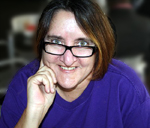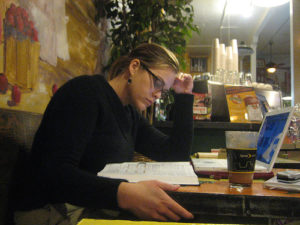How people read on the Web sounds like one of those silly phrases that you want to answer – with their eyes of course!
But the point is that while people do use their eyes to read on the Web, they read very differently from the way they read print.
So if you want to be a Web writer, or write any kind of content for the Web, you need to know and understand how people are going to read your content, because otherwise your beautifully crafted prose is simply going to be invisible in the vastness of cyberspace.
Writing for the Web
Writing for the Web is a whole new technique – just ask my students – and doing it really well is not easy because you have to unlearn a way of writing that has become your natural way of communication.
So let’s look at how people read on the web. Well, firstly, they don’t read; they skim or scan. When people read on a screen they don’t spend as much time as on a printed page and they also don’t absorb as much.
One of the big gurus of Web usability is Jacob Nielsen’s. His study found that 79 percent of their test users always scanned any new page they came across; only 16 percent read word-by-word.
Eye-tracking studies also indicated that the top left quadrant of the screen is the post popular – which means that if you are designing a website it is a really good idea to put something very important and eye-catching in this space.
Scannable Web Copy
In order to catch the eye, Web pages have to employ scannable text, using
- highlighted keywords (hypertext links serve as one form of highlighting; typeface variations and colour are others)
- meaningful sub-headings (not “clever” ones)
- bulleted lists
- one idea per paragraph (users will skip over any additional ideas if they are not caught by the first few words in the paragraph)
- the inverted pyramid style, starting with the conclusion
- half the word count (or less) than conventional writing
Read more here:
http://www.useit.com/alertbox/9710a.html
About the Author:

She has written profiles, features, advertising copy, obituaries, press releases, and columns in magazines, company newsletters and newspapers, and written and produced corporate scripts.
Since she stopped writing political speeches (after 13 years in the trenches), she has focused on writing for the web and presenting workshops on communications-related issues. She is a Feature Writer at Suite 101.com (http://www.suite101.com/profile.cfm/ethekwinigirl).
Karen tutors the Writing for the Web Course and the Writing for Social Media Course at the Writers’ College.
Photo credit: flickr.com_betsssssy













